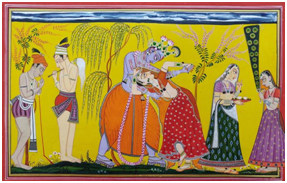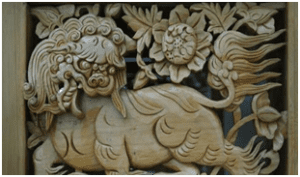INTERNATIONAL RELATIONS
1. INDIA –SRILANKA ANNUAL BILATERAL MARITIME EXERCISE (SLINEX-23)
TAGS: GS-II-INTERNATIONAL RELATIONS-PRELIMS PERSPECTIVE
THE CONTEXT: The 10th edition of IN-SLN bilateral maritime exercise SLINEX-23 is scheduled at Colombo from 03 – 08 April 2023. The exercise is being conducted in two phases: the Harbour Phase from 03-05 April 2023, followed by a Sea Phase from 06-08 April 2023. Indian Navy is being represented by INS Kiltan, an indigenous Kamorta class ASW corvette and INS Savitri, an Offshore Patrol Vessel.
THE EXPLANATION:
- AIM: SLINEX aims at enhancing interoperability, improving mutual understanding and exchanging best practices while jointly undertaking multi-faceted maritime operations. Professional, cultural and sporting events, as also social exchanges are planned during the harbour phase to further bolster the bonds of friendship and camaraderie between both the navies.
- The Indian Navy has already held multiple bilateral and multilateral exercises with foreign navies this month. In March, Konkan 2023—the annual bilateral maritime exercise between the Indian Navy and the Royal Navy—was held off the Konkan coast in the Arabian Sea. The Navy also participated in the third edition of the multilateral exercise La Perouse last month in the Indian Ocean Region.
ECONOMIC DEVELOPMENTS
2. WHAT IS PURCHASING MANAGERS’ INDEX (PMI)?
TAGS:GS-III-ECONOMIC DEVELOPMENTS
THE CONTEXT: India’s manufacturing sector activity continued to expand in March 2023, with the S&P Global Purchasing Managers’ Index (PMI) coming in at 56.4, up from February’s 55.3, according to data released.
About Purchasing Managers’ Index:
- The PMI or a Purchasing Managers’ Index (PMI) is an indicator of business activity — both in the manufacturing and services sectors.
- It is a survey-based measure that asks the respondents about changes in their perception of some key business variables from the month before. And these surveys are conducted on a monthly basis.
- It is calculated separately for the manufacturing and services sectors, and then a composite index is constructed.
- The survey is compiled by IHS Markit for more than 40 economies worldwide.
- IHS Markit is a global leader in information, analytics and solutions for the major industries and markets that drive economies worldwide.
- IHS Markit is part of S&P Global.
How is the PMI derived?
- The PMI is derived from a series of qualitative questions to a large number of companies in the concerned sector. For manufacturing PMI, the questionnaire is sent to manufacturing companies. The questions are factual in nature, and the survey is not meant for opinions, intentions, or expectations.
- The questions are related to 5 key variables. The variables with their weights in the index are — new orders (30%), output (25%), employment (20%), suppliers’ delivery times (15%) and stock of items purchased (10%).
- It is calculated as:
PMI = (P1 * 1) + (P2 * 0.5) + (P3 * 0)
Where:
- P1 = percentage of answers reporting an improvement
- P2 = percentage of answers reporting no change
- P3 = percentage of answers reporting a deterioration
- A PMI number greater than 50 indicates expansion in business activity. A number less than 50 shows a contraction. The rate of expansion is also judged by the difference from the mid-point (50) and also by the previous month’s data.
What are its implications for the economy?
- The PMI is usually released at the start of the month, much before most of the official data on industrial output, manufacturing, and GDP growth becomes available.
- Economists consider the manufacturing growth measured by the PMI as a good indicator of industrial output.
- The index also helps investors who are looking to invest in the stock markets as it helps in determining the economic health of the country. Central banks of many countries also use the index to make decisions on interest rates.
GOVERNMENT SCHEMES IN NEWS
3. REVISION SERIES: PM-DEVINE
TAGS:GS-III- GOVERNMENT SCHEMES
THE CONTEXT: Prime Minister’s Development Initiative for North East Region (PM-DevINE), was announced as a new Central Sector Scheme with an initial allocation of Rs 1500 crore in the Union Budget 2022-23.
THE EXPLANATION:
- The approval of the Cabinet was accorded for the PM-DevINE Scheme on 12 October, 2022. The scheme will have 100% Central funding, and has an outlay of Rs. 6,600 crore for the 4 year period from 2022-23 to 2025-26 (remaining years of the 15th Finance Commission period).
- The objectives of PM-DevINE are to: (i) Fund infrastructure convergently, in the spirit of PM GatiShakti; (ii) Support social development projects based on felt needs of the NER; (iii) Enable livelihood activities for youth and women; and (iv) Fill the development gaps in various sectors.
- PM-DevINE Scheme projects will lead to creation of infrastructure, social development projects, support industries and create livelihood activities for youth and women, thus leading to income and employment generation.
Significance of PM-DevINE Scheme to North Eastern Region:
- The PM-DevINE scheme is considered a boon for North East India. Mr. HimantaBiswaSarma, the Chief Minister of Assam, rightly stated that the PM-DevINE scheme is the first of its kind and that the government’s commitment towards the north-eastern states is being reflected in deeds and not simply in words. The scheme would provide the following benefits:
- Investments: The scheme includes funding for projects in infrastructure, healthcare, agriculture and livelihood. This would help improve the standard of living of people in the region.
- State-specific projects: Mizoram-based projects such as Aizawl bypass and bamboo link roads suggest that Mizoram would be the biggest beneficiary of this initiative, followed by Sikkim. The Aizawl bypass is expected to reduce traffic and congestion. Also, the construction of bamboo link roads for the transport of bamboo from forests would help bamboo growers in remote and inaccessible areas connect better with the outside world, and promote local and regional development.
- Healthcare: Under the scheme, services for the management of paediatric and adult haemotolymphoid cancers would be established. This would help improve cancer care in the region.
- Co-existence with other schemes: The scheme would complement the existing schemes in the region rather than substituting any of them. Thus, the north-eastern states will continue to enjoy the benefits provided by the existing schemes.
PRELIMS PERSPECTIVE
4. GIR CALF AND BREED
TAGS: PRELIMS PERSPECTIVE
THE CONTEXT: Recently, India’s first cloned desi Gir female calf, Ganga was produced at NDRI.
THE EXPLANATION:
- This breed is otherwise known as Desan, Gujarati, Kathiawari, Sorthi, and Surati.

- It originated in the Gir forests of South Kathiawar in Gujarat.
- It derives its name from the Gir forest, which is the natural habitat of the breed.
- Gir cattle is a dairy cattle breed and is mainly raised for milk production in India.
- Under a project by National Dairy Research Institute, Karnal to work on cloning of indigenous cow breeds such as Gir and Sahiwal, India’s first cloned Gir female calf named ‘Ganga’.
Distribution:-
- The native tract of Gir cattle is the Gir hills and forests of Kathiawar.
- It includes the Amreli, Bhavnagar, Junagadh and Rajkot districts of Gujarat.
- The breed is also known as Bhodali, Gujarati, Sorthi, Surti, Kathiawari and Desan.
Export:-
- Gir cattle are also very popular outside India.
- United States, Mexico, Venezuela and Brazil have imported this breed.
Process:-
- To clone the Gir, oocytes are isolated from live animals using ultrasound-guided needles, and then, matured for 24 hours under control conditions.
- The somatic cells of elite cows are used as donor genomes, which are fused with OPU-derived enucleated oocytes.
- Following chemical activation and in-vitro culture, the developed blastocysts are transferred into recipient mothers to deliver the Gir calf.
VALUE ADDITION:
About National Dairy Research Institute (NDRI):-
- ICAR-National Dairy Research Institute (NDRI) is located in Karnal, Haryana.
- It is one of the premier Institutes in the dairy sector.
- It has played a crucial role in India’s development in milk production with its continuous research.
- The Institute has the distinction of being a Deemed University for implementing its academic programmes since 1989.
- The Institute provides high-quality education in the field of dairying, which has no parallel in Asia
- The Institute has been ranked first among all Agricultural Universities of India including 4 Deemed Universities consecutively three times in the years 2016-17, 2017-18 and 2018-19.
- The Institute has also conferred the ‘Sardar Patel Outstanding ICAR Institute award’ in 2014.
- It was awarded Agriculture Leadership Award 2013 for setting up a benchmark in dairy research by contributing to research efforts to augment milk productivity, value addition, quality and safety of milk and economic and marketing aspects related to dairying.
- Prior to this, the Institute also received Education Leadership Award in recognition of the talent and leadership among educational institutes across India.
5. GI TAG FOR LADAKH’S WOOD CARVING AND BASOHLI PAINTINGS FROM KATHUA
TAGS: PRELIMS PERSPECTIVE
THE CONTEXT: World famous Basohli Paintings from Kathua district of Jammu & Kashmir (UT) and Ladakh Wood Carving of Ladakh (UT) recently received Geographical Indication (GI) Tagging.
THE EXPLANATION:
- Basohli Painting’: the famous Pahari miniature style of painting known for its use of bright and bold colours and bold colours and peculiar facial forms, from Jammu’s Kathua district, has received the geographical indication (GI tag.)
- Ladakh’s Wood Carving: The craft is practiced in the Wanla and Cjoglamasar districts of Leh.Items ranging from folding tables called choktse, wooden pot called fehpur, tea mixing pot called gurgur, larger tables, cupboards, ritual bowls, cup with lids to printing blocks are produced under thiscraft-form.
- The GI is an authorization given to a product originating from a specific geographic area having unique attributes. It is a form of Intellectual Property (IP) but unlike other Ips such as patents, copyrights, trademarks etc, is not owned by individuals but by community.
- A GI tag product carries the guarantee of authenticity associated with a specific region. Some of popular GI products in India include Darjeeling tea, Banarasi saree, Kullu shawls, Mysore silk etc.
- There are 432 GIs granted by Government of India so far.





